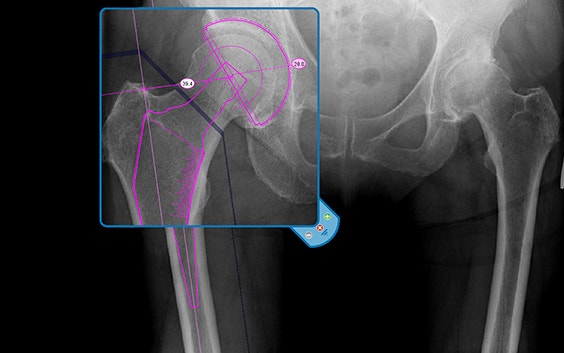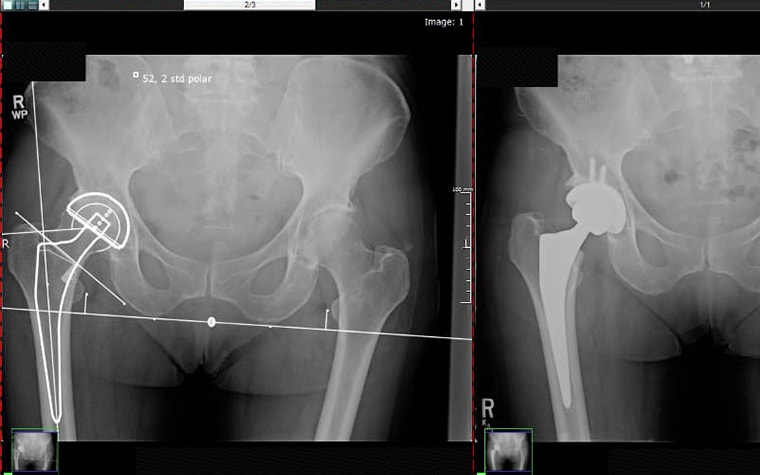EXPERT INSIGHT
Save Time by Predicting the Right Prosthesis Size before Surgery with OrthoView

Preoperative planning plays an essential role in the successful outcome of joint replacement surgery. It helps doctors achieve optimum mobility and a pain-free life for their patients. Digital planning software makes it easier for orthopaedic surgeons to predict confidently the right implant size and position before going into the OR.
Dr. Andrew Noble, M.D. from Palm Beach Orthopaedic Institute in Floride uses OrthoView, along with PACs integration, because it offers the latest prosthesis templates standard in the software. The end-result is better team collaboration, which ultimately saves him time in the OR.


More confidence
Since transitioning to digital preoperative planning, Dr. Noble now finds that he relies on his templated images even more in the OR, particularly for judging the level of resection, alignment, sizing, and leg length.
“While I still confirm all of my cuts, angles, sizes, etc. in the OR, I would be less confident in the OR without a digital plan”, says Dr. Noble.
Templates were an important, but not the only, criteria he had when choosing the software. He was also looking for a solution that is compatible with the PACs in the hospital: “I was obviously looking for a solution that is easy to use, has all the templates I need, and is accurate. But, I also needed it to be compatible with our PACS so that I can work on my images from the PACS and save them back to it easily.”
Better team collaboration
Dr. Noble found another unexpected benefit of digital orthopaedic templating over analog with printed X-rays and acetate templates. Digital pre-planning has led to better team collaboration, ultimately reducing time spent in surgery: “Digital templating not only prepares me as the surgeon, but also the surgical tech, for each case. The surgical techs review my templates just prior to our case, allowing them to prepare the back-table with the appropriate instruments and trials based on the components and sizes that I have templated. This allows the case to flow more efficiently, thereby reducing OR time."
Dr. Noble now plans all of his hip and knee cases digitally, and he says, “I feel more confident with my pre-surgical plan and surgical outcomes now that I plan all my procedures digitally. I know that I will have the correct prosthesis for the patient's anatomy since I templated the case in advance.”
Share on:
You might also like
Never miss a story like this. Get curated content delivered straight to your inbox.
